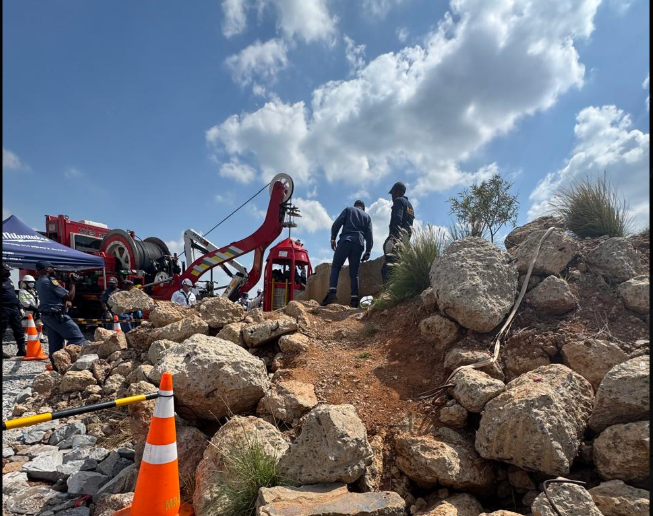Johannesburg — The derelict Stilfontein shaft, which became a hell hole for hundreds of trapped miners, is just one of 6,000 that have been abandoned by South Africa’s gold extraction companies.
The vast Witwatersrand goldfield, where the Stilfontein mine is located, was the focus of a heady gold rush in the 19th century.
But the once-flourishing commercial gold mining industry has gone.
Now the disused underground galleries attract clandestine workers from across southern Africa, who risk their lives to scrape the last meagre flakes of gold from the walls with hand tools.
Many of the undocumented workers who eke out a living in these perilous conditions are from Zimbabwe and Mozambique. Some are from gangs in Lesotho.
In 2015, there were about 30,000, according to a report by the authorities.
While artisanal miners are common across Africa, South Africa’s case is unique in that they work illegally in industrial-scale commercial mine shafts that have been deserted for lack of profitability.
Until 2007, South Africa was the world’s leading producer of gold. By 2022, it had dropped to 11th place, according to the US Geological Survey.
Mining accounted for 21 percent of South Africa’s GDP in 1980, according to the national statistics department. By 2023, that had dropped to just 6.2 percent.
Months underground
Since August, police and rescue services have brought nearly 2,000 clandestine miners out of the disused shaft near Stilfontein, southwest of Johannesburg. Of those, 87 were dead.
Of the frail, emaciated men evacuated from Stilfontein, nearly 60 percent were Mozambican. Many others came from Zimbabwe.
“Most South Africans either are employed or have government subsidies… They don’t need to work in informal mining,” explained Robert Thornton, professor of anthropology at the University of the Witwatersrand.
The gold deposits in the Witwatersrand basin are now so depleted that mining is back-breaking work.
“You’re getting seven to 15 grammes of gold per tonne of processed rock,” said Thornton, who has written studies on the clandestine miners.
Thornton said that, in general, artisanal miners usually stayed underground for around a fortnight.
Stilfontein’s notorious shaft number 11, where the latest mining tragedy took place, was different.
The shaft is 2.6 kilometres (1.6 miles) deep. Such is the difficulty of accessing the galleries at the bottom that many workers stayed underground for “up to a year”, according to Ayanda Ndabeni, a miner who resurfaced in November.
They can only obtain food and water if it is sent down to them, often through ventilation shafts, said South African journalist Kimon de Greef.
Organised crime
When miners manage to glean some gold from their underground ordeal, they may lose their meagre pickings to criminal gangs anyway, Thornton said.
Lesotho, which is very poor, has no mining activity, so Lesotho gangs steal gold from the workers, Thornton explained.
The Global Initiative Against Transnational Organized Crime (GI-TOC), an NGO based in Geneva, said in a 2021 report on illicit gold markets in east and southern Africa that the sector was plagued by “violent gang and turf wars”.
But contrary to an accusation commonly bandied about in South Africa, illegal mining is not exclusively the domaine of foreigners.
Thornton said there existed a “sort of independent gold territory” around Barberton, near the eastern border with Eswatini, where the miners are “mostly Swazi and South Africans”, not foreigners.
“They protect themselves with guns and militias,” he said.
One of the key reasons the perilous informal mining sector survives is the connivance of established gold dealers.
GI-TOC said a “lack of transparency and regulation of supply chains” facilitated “gold laundering (and) VAT fraud”.
“Once laundered, gold is exported or smuggled out of the country,” it said, “primarily to the UAE”.
Follow African Insider on Facebook, Twitter and Instagram
Source: AFP
Picture: X/@SAPoliceService
For more African news, visit Africaninsider.com


